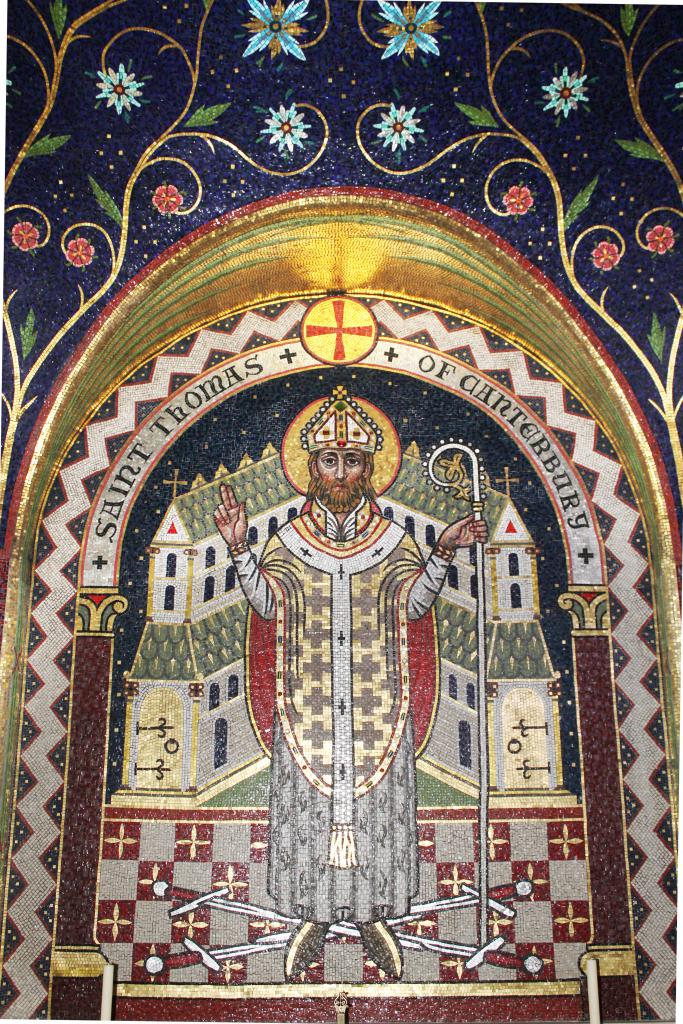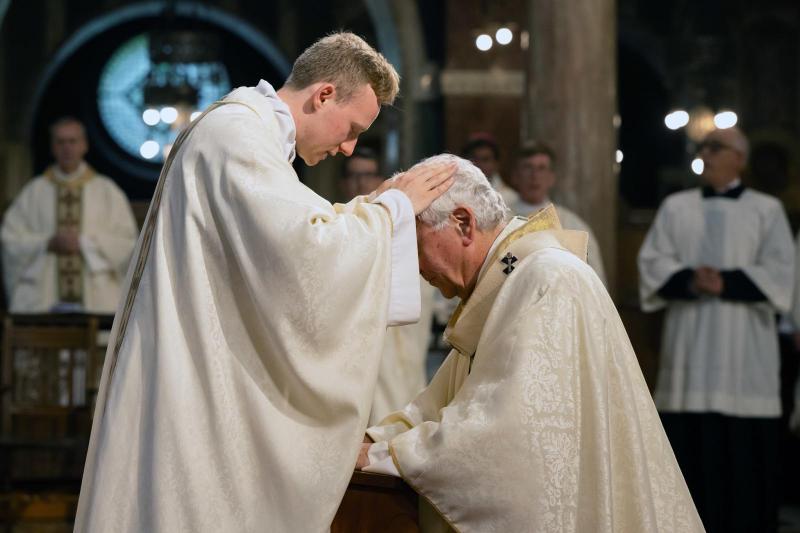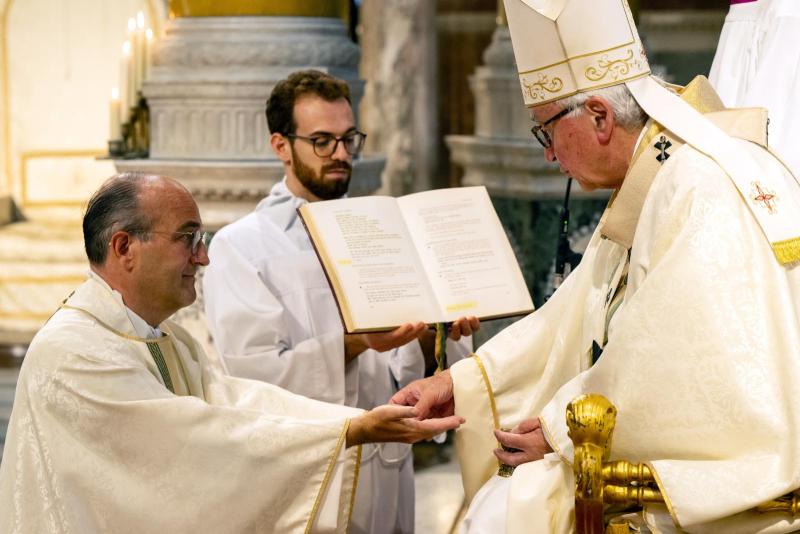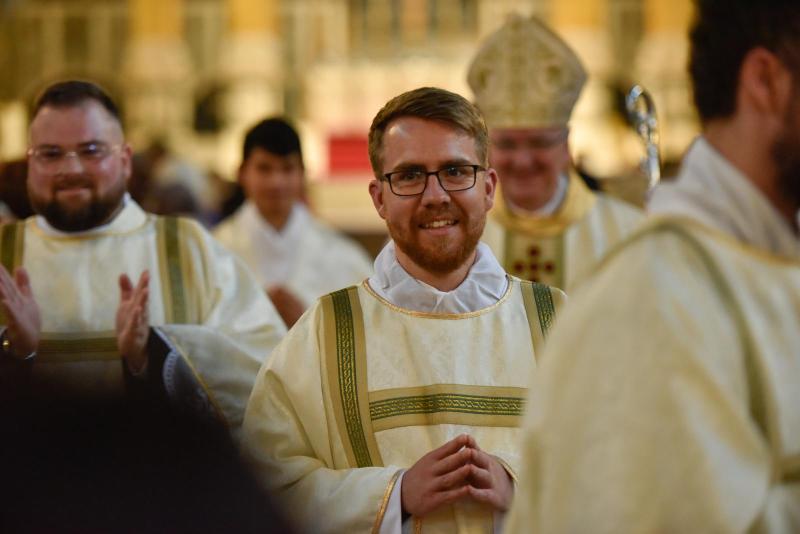Written by the Hungarian Ambassador to the United Kingdom, Péter Szabadhegy, this article appeared in the May 2016 edition of the Westminster Record.
In a joint initiative with the Church of England and the Catholic Church of England and Wales, the Embassy of Hungary will bring a relic of St Thomas Becket, which has been kept in Esztergom, Hungary for centuries, to the United Kingdom for a week in May. To launch this Becket Week, a Mass will be celebrated by Cardinal Péter ErdÅ‘, Primate of Hungary, Archbishop of Esztergom-Budapest, and Cardinal Vincent Nichols, Archbishop of Westminster, at Westminster Cathedral on 23 May. Also present at the Mass will be János Áder, President of the Republic of Hungary.
During the week, the relic from Esztergom will be displayed and celebrated together with other relics of St Thomas at Westminster Abbey, the Houses of Parliament, Lambeth Palace and Mercer’s Chapel. At the end of the week, the relics will be transferred to Rochester Cathedral and then on to Canterbury Cathedral.
This will be the first time that this particular relic of St Thomas Becket, after having been kept with great reverence in Esztergom, Hungary for 800 years, will visit Britain. The relic represents the deep and manifold historical and cultural links between Hungary and the United Kingdom. The series of events will provide an opportunity for many people to venerate the relics and contemplate the relevance of Thomas Becket in today’s society.
The devotion to St Thomas was revitalised by the Catholic Church in Hungary under the communist regime when the Church suffered serious limitations to her liberty. Since 1977 a candle lighting ceremony and a symposium have been held annually in Esztergom to honour St Thomas Becket on his feast day.
Among the many historical and cultural links uniting England and Hungary, the ideal friendship of the primate seats of Canterbury and Esztergom have particular significance. The story can be traced back as far as the 12th century, when two holy and uncompromising archbishops, Thomas Becket in Canterbury and Lukács Bánfi in Esztergom, fought for the Church’s liberty.
It is very likely that Archbishop Lukács adopted the cult of the martyred Archbishop of Canterbury immediately after his canonization. Written evidence from 1191 suggests that a church and provostship dedicated to St Thomas Becket were already functioning in Esztergom, on the hill named after the holy martyr. The church, founded by either Archbishop Lukács or his successor, Archbishop Jób, was the centre of St Thomas’s cult with a chapter of six canons and proper liturgical texts.
Margaret of France, Queen of England and later spouse of Béla III of Hungary, was also instrumental in bringing the saint’s devotion in Hungary. Queen Margaret had personally known Thomas Becket at the court of her father-in-law Henry II, and she kept the martyr’s memory with great reverence in the court of her second husband, Béla III.
We have no reliable information on how the relics of St Thomas arrived to Hungary. We know, however, that one or two prelates from Hungary were present in Canterbury at the 1220 reburial (translatio) of St Thomas Becket’s body. On that occasion his tomb was opened and relics were extracted. We know that Archbishop János of Esztergom (1205–1223) had the opportunity to meet Archbishop Stephen Langton personally (e.g., at the IV Lateran Council in 1215), and it is reasonable to suppose that he might have asked for a relic for the church dedicated to the saint in Esztergom. It is interesting to note that in Hungary only the Esztergom liturgical calendars celebrated the feast of the translation of St Thomas Becket on 7 July.
The first inventory of the Esztergom Cathedral Treasury, from 1528, reports the presence of St Thomas Becket’s relic (a part of his arm) kept in a gold plated silver reliquary. It testifies to the relic’s presence in Esztergom, before the destruction of Becket’s bones in Canterbury by order of Henry VIII. Another inventory from 1687 proves the relic survived the Ottoman occupation of Esztergom (1543-1683).
The church of St Thomas was indeed completely destroyed during Ottoman rule and the provostship survived only as a titular see held by one of the canons of the Esztergom Metropolitan Chapter. On the site of the former church in St Thomas Hill a small chapel of Our Lady of Sorrows was built in 1823.
It is also significant that the devotion to the martyred bishop, who strenuously defended the Church’s rights against the State, was revitalized in a period when the Church in Hungary suffered serious limitations to her liberty. It was, in fact, Cardinal László Lékai, Archbishop of Esztergom, who in the 1970s introduced a candle lighting commemoration on the 29 December feast day of the saint and had a fragment of the relic transferred to the chapel, where in 1977 a Hungarian-English plaque was unveiled in St Thomas’ memory. Since then every year on the feast of St Thomas, the relics are displayed at the chapel and a commemorative symposium is addressed by high-ranking civil and Church authorities as well as by the Ambassador of the United Kingdom in Hungary.
Details of the events of the St Thomas Becket pilgrimage are as follows:
23 May
- 4pm Relics from Esztergom (Hungary), St Magnus the Martyr (London), St Thomas of Canterbury (Fulham), St Thomas Church (Canterbury), and Stonyhurst arrive at Westminster Cathedral.
- 5pm Vespers, sung by Westminster Cathedral Choir.
- 5.30pm Solemn Mass in Westminster Cathedral, celebrated by Cardinal Péter ErdÅ‘, Archbishop of Esztergom-Budapest, and Cardinal Vincent Nichols.
24 May
- 4pm Relics from Esztergom (Hungary), St Magnus the Martyr (London), St Thomas of Canterbury (Fulham), St Thomas Church (Canterbury), Stonyhurst and Westminster Cathedral arrive at Westminster Abbey.
- 5pm A service of Solemn Evensong sung jointly by the Cathedral and Abbey Choirs in the presence of János Áder, President of the Republic of Hungary.
25 May
- The relic held in Esztergom will be displayed throughout the morning in St Margaret’s Church (Westminster Abbey).
- 2.30pm The relic will be transferred to St Magnus the Martyr Church.
- 4pm Service for the public in St Magnus the Martyr Church (Lower Thames Street, London EC3R 6DN).
26 May
- The relic held in Esztergom (Hungary) will be on display in St Margaret’s Church (Westminster Abbey) throughout the day.
- 6.30pm Eric Symes Abbot Lecture on St Thomas Becket in Westminster Abbey (Roger Scruton).
27 May
- The relic from Esztergom (Hungary) will be on display in St Margaret’s Church (Westminster Abbey) until 2pm.
- 4pm The relic from Esztergom will be transferred to Rochester.
- 5.30pm A service of solemn Evensong in Rochester Cathedral.
28 May
- 10.30am The relic from Esztergom will be displayed in Rochester Cathedral.
- 2pm The relic will be transferred to Canterbury.
- 2.45pm Pilgrims assemble at St Michael’s Church, Harbledown (Summer Hill, Harbledown CT2 8NW)
- 3pm Pilgrims set off on foot from St Michael’s to Canterbury Cathedral via Westgate Towers. The pilgrimage takes about 1 hour (1.5 miles).
- 4pm Pilgrims arrive at Canterbury Cathedral (the Precincts). The relic and pilgrims pass through the main entrance. The Dean and the leadership of the Cathedral receive pilgrims at the nave. Welcome service, speeches by religious and civic leaders.
29 May
- 1.30pm Mass at Canterbury Cathedral (in the crypt)




